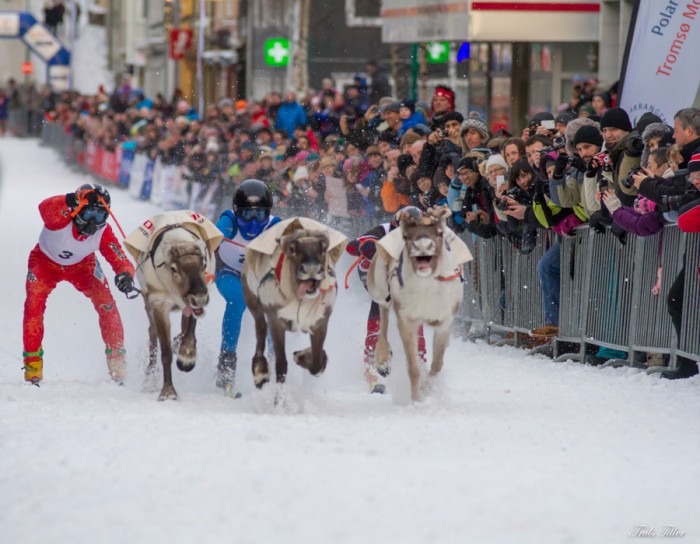1. Reindeer racing is a competitive and widely followed sport in some northern parts of Norway, Finland, and Russia. It involves speed-suit-wearing jockeys on cross country skis and a harness being dragged along by full-grown reindeer on a fixed snowy course, reaching speeds of up to 60 km per hour.
2. Reindeer—more commonly known as caribou in North America—are a species of deer native to arctic, subarctic, tundra, boreal, and mountainous regions of northern Europe, Siberia, and North America. Both male and female reindeer grow and shed antlers each year, with some large males displaying antlers up to 135 cm in length. Depending on the subspecies and quality of diet, some reindeer can grow to be up to 185 kg in weight.
3. Racing reindeer can be traced back to the Sami, an indigenous Scandinavian people who inhabit the far north of Norway, Sweden, Finland, and the Kola Peninsula of Russia. Reindeer are integral to Sami heritage and lifestyle, who rely on the animals for their fur and meat, as transportation and as a source of cultural pride.
4. Reindeer are notoriously difficult to domesticate and train for racing, being naturally skittish animals. The semi-wild reindeer are mostly raised for their meat, with only some particularly strong and fast specimens chosen and bred for their racing abilities.
5. “When the reindeer is a few years old, they’ll start to race it and see how good it is,” Dr Carol Brown-Leonardi of the Open University told The Guardian. “Reindeer herding is big business in that part of the world. So they may be wasting money because they’re investing in a reindeer they’re not sure about. It’s quite a gamble on gut feelings and instincts.”
6. The largest annual reindeer race takes place in Tromsø, Norway, each February as part of Sami National Day celebrations. Thousands of spectators come from near and far to witness “the fastest reindeer in Norway” race down a 200m track on Tromsø’s main avenue through the city center, where stores and even banks are closed for the day.
7. The competition is organised as an elimination cup, starting with qualifying heats where only the winners of each heat progress through to the next round. The final at the end of the day decides the national champion of Norway.
8. Another major race on the reindeer racing circuit takes place on a 1000m snow track in Levi, Finland, another region that prides itself in its Sami roots. This is contested between reindeer breeding cooperatives, who compete to see who produced the strongest and fastest reindeer in their herds that year. There are 51 reindeer breeding cooperatives in Finland that raise reindeer for meat, breeding, pulling sleighs, work on farms, as well as racing.
9. In Naryan-Mar, Russia, teams come from reindeer herding communities in the region to participate in various events including sled races. In its journey to the 2014 Winter Olympic Games in Sochi, Russia, the Olympic flame passed through Naryan-Mar on a reindeer sled.
10. Every February, as part of the lead-up to the Iditarod Dog Sled Race in Anchorage, Alaska, hosts a winter variation of Pamplona’s Running of the Bulls: The Running of the Reindeer. People gather in heats and sprint down a street pursued by a herd of charging reindeer, dodging hooves and antlers as they run.







